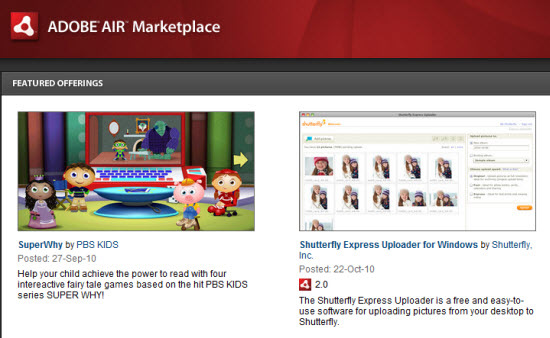Adobe the topnotch company of software development across the globe released its new version Integrated Runtime Environment Adobe AIR 3 soon after the release of Flash Player 11 while noticing the sharp rise in HTML5. The new Adobe AIR 3 brings some robust speed enhancements to the system and a new Stage 3D accelerated graphics rendering.
The Adobe AIR runtime is principally a deployment platform that runs applications across multiple systems without coding in more than one language. It enables developers to deploy standalone applications built with HTML, JavaScript, ActionScript, Flex, Adobe Flash Professional, and Adobe Flash Builder across platforms and devices including Android, BlackBerry, iOS devices, personal computers, and televisions.
It’s powerful software providing users the same end-user experience, whether on Windows, Mac, or Linux. For example TweetDeck is an AIR app which can be used on any platform. The platform allows developers to save a lot of time in writing different codes for different devices.
The Adobe AIR 3 brings in many new features to provide cross platform support. The major improvements are:
Stage 3D accelerated graphics rendering: The new architecture provides low-level Stage3D APIs for advanced rendering in apps and gives framework developers classes of interactive experiences. 3D graphics rendering allows AIR to perform up to 1,000 times faster than previous versions of AIR.
Native extensions for Adobe AIR: Now you can use native code to take advantage of the same platform- and device-specific native capabilities and APIs available to native apps along with easy integration into AIR applications.
Captive runtime support: With Adobe AIR 3 developers can enjoy more flexibility with their app packaging options as AIR 3 automatically packages their codes with Android, iOS, Windows, and Mac OS app into a single installation file that includes the app and a bundled version of the AIR runtime.
New mobile features for Android, BlackBerry Tablet OS, and iOS: AIR 3 offers many new features for the development of expressive, high-performing applications for Android, BlackBerry Tablet OS and iOS with more support for Android devices including software licensing and hardware captive runtime support.
The release of AIR 3 enables developers to make hybrid applications or desktop tools to integrate with various web services. It also provides some offline functionalities like taskbar and dock notifications that Web browsers don’t yet have. Adobe is really endeavoring to provide a new development environment and with the release of AIR 3 it has made a solid relevance on the web.

